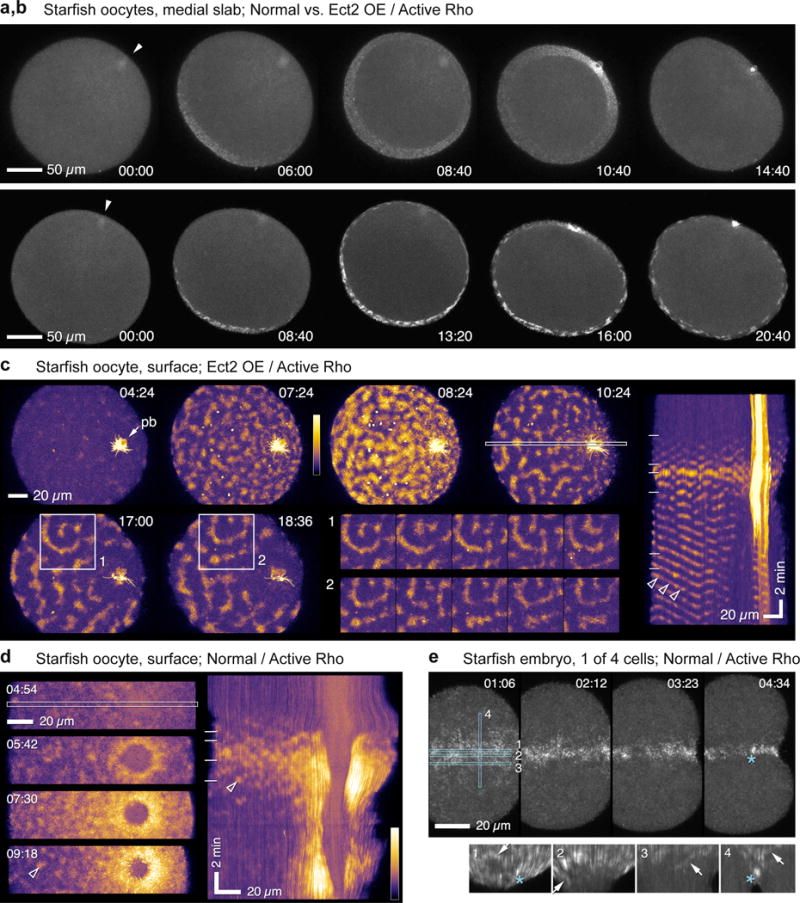Figure 3.

Rho activity waves in starfish oocytes and embryos. (a,b) Frames from time-lapse sequences of Rho activity during meiosis I in normal starfish oocyte (top; projection of 8 1 micron sections) and oocyte overexpressing wild-type S. purpuratus Ect2 (bottom; projection of 8 1.5 micron sections). See Supplementary Video 6. Arrow indicates animal pole. Rho activity appears at vegetal pole, spreads upward, and converges on nascent polar body, forming cytokinetic Rho zone. In Ect2-expressing oocytes the global pattern of Rho activity mirrors that of controls but waves are much brighter, travel further, and persist after polar body emission. (c) Surface view of cortical Rho activity in meiosis II oocyte overexpressing Ect2 (see Supplementary Video 7; pb = polar body; projection of 14 1 micron sections). High amplitude waves form and settle into repetitive, often spiral, patterns. Inset montages are successive 60 s time points from boxed region on left starting at 17:00 (1) or 18:36 (2), showing patterns that approximately replicate on ~ 70 sec time scale (1 is spiral, 2 is center-surround with a slash underneath). Kymograph on right generated from area indicated by outlined strip, 4th frame. Diagonal bands span half the oocyte, showing that waves travel at least this far. Horizontal lines in kymograph mark times of frames shown on left. Arrowheads point to wave front that traverses tens of microns at steady speed (d). Surface view of cortical Rho activity in normal starfish oocyte, single frames (left) and kymograph (right). Rho waves appear, brighten, and coalesce into continuous zone around nascent polar body (see Supplementary Video 8). Arrowheads indicate wavelet that appears in both kymograph and still frame. (e) Rho activity in normal starfish blastomere (1 of 4 cells), still frames and kymographs generated from strips outlined in blue: 1, furrow center; 2, furrow periphery; 3, just outside furrow; 4, across furrow. Rho waves focus at equator before ingression, appear in the furrow (arrows), and eventually merge into a coherent Rho zone. Asterisk indicates particularly bright focus that appears in 4th still frame and kymographs 1 and 4. Images are representative of 10 (a, d), 20 (b, c) and 4 (e) independent experiments, respectively.
